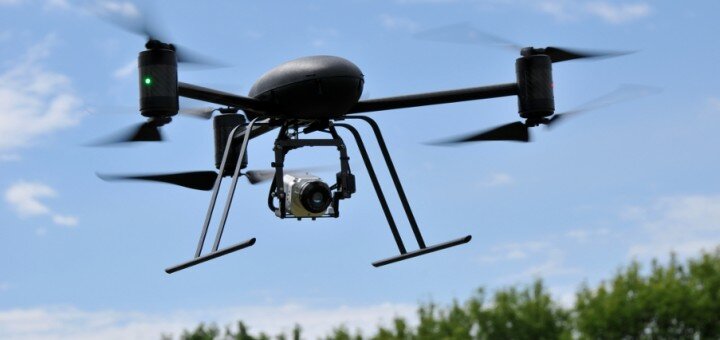To get our regular email updates, simply click here.
Surveillance technology that could slash crime rates and topple deadly domestic terror plots is ready. And despite privacy concerns, it’s probably coming to a city near you.
It was inevitable. Wide angle camera hardware has been getting better for years. Now those fancy cameras are being married to bespoke software packages fitted into fleets of low flying aircraft. It all sounds very creepy. Imagine an eye in the sky recording the public movements of every man, woman and child. Now imagine what those eyes could do to crime rates and terrorism. Imagine how appealing that would be in the current political climate of angst and fear. You don’t really have to imagine. The tech is here, and it is already being deployed without a public debate.
Ross McNutt is working his latest project in Baltimore, Maryland. His company, Persistent Surveillance Systems, has been photographing a 30 square mile radius continuously since January using a special Cessna fitted with a 192-million-megapixel camera setup. That’s the equivalent of 800 video cameras live streaming to his downtown office, where the heavy lifting occurs.

A team of analysts using the video data and police scanners follow crimes in real time. They watch activity, follow assailants and vehicles as they leave the scene. McNutt jokes the software is like “Google Earth Live with Tivo” because his team can determine both where the bad guys go, and where they came from. The only thing left to do is a detailed report delivered to the police.
This is not a new idea. McNutt, an MIT trained physicist and aeronautical engineer designed the program for the Pentagon to watch the dangerous streets of Iraq. Later, Persistent Surveillance would have limited stints in Philadelphia, Baltimore, Indianapolis, Compton, Charlotte, Nogales and Torreon, Mexico. The latest Baltimore project is special because it’s a return engagement.
That’s the key. Increasingly, elected officials are turning toward more surveillance as the solution to crime and terror threats despite obvious objection from civil libertarian groups like the ACLU. Manhattan now has more than 4,000 closed circuit television cameras. The New York Police Department generates one million hours of video footage just from police body cameras. And advances in video analytics due to machine learning is making all of that data actionable.
Defense contractors are at the forefront of this new wave and they are the likely beneficiaries, as are specialized camera makers. Lockheed Martin (LMT) and Northrop Grumman (NOC) have been moving the industry toward digital, away from analog. That allows them to bring the whiz-bang algorithmic modelling developed for military unmanned aerial vehicle programs to American cities. Chip maker Ambarella (AMBA) is the leading maker of the imaging devices used.
It’s not hard to imagine a future with more cameras. In the current political climate, we may even welcome more eyes looking for bad guys. I'll recommend entries for LMT, NOC and AMBA in coming weeks for the Internet Shockwave buy list
##

About Jon Markman: A pioneer in the development of stock-rating systems and screening software, Jon Markman is co-inventor on two Microsoft patents and author of the bestselling books The New Day Trader Advantage, Swing Trading and Online Investing, as well as the annotated edition of Reminiscences of a Stock Operator. He was portfolio manager and senior investment strategist at a multi-strategy hedge fund from 2002 to 2005; managing editor and columnist at CNBC on MSN Money from 1997 to 2002; and an editor, investments columnist and investigative reporter at the Los Angeles Times from 1984 to 1997.
Sign-up for our Free Friday email
For teams that need additional security, control, and support.